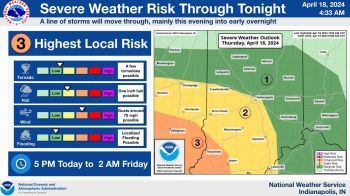NEW DELHI, India. — A spike in novel coronavirus in India has prompted concerns that the world’s second-most populous country could face its own outbreak of the deadly virus, which to date has infected more than 95,000 people and killed at least 3,283 worldwide.
Twenty-nine cases have been confirmed inside the country, including three who have recovered. Many of the cases are linked to a group of travelers from Italy, the hardest-hit country in Europe, Health Minister Harsh Vardhan said.
Authorities in the country have advised caution, but have not raised the alarm. Vardhan told lawmakers in parliament Tuesday that public health authorities are focusing on India’s “core capacities for disease preparedness and response.”
The government has begun screening all passengers arriving in the country for coronavirus.
“The scale and extent of our interventions have increased in alignment with the evolving situation of COVID-19 across the world, and India in particular,” he said, referring to the disease by its formal name. “With the increasingly global spread of the disease, we are confronted with new challenges. The contact tracing of positive cases requires the tracing of hundreds of contacts in multiple locations and monitoring their health.”
Vardhan also said the government was preparing a “containment plan” for the city of Agra — home to the Taj Mahal — where a cluster of cases has been identified.
Prime Minister Narendra Modi said “there is no need to panic” earlier this week on Twitter and advised the public that the government is “working together” to stop the virus from spreading further.
Modi said Wednesday he would not attend next week’s Holi celebrations — the Hindu festival that marks the start of spring in which revelers throwing bright-colored powdered paint — because of advice from experts to avoid mass gatherings. Holi festivities at the presidential palace were also canceled.
Authorities around the globe are taking similar steps now that the virus has spread to more than 80 countries and territories across every continent except Antarctica. Since it was first identified in the Chinese city of Wuhan in December last year, major self-sustaining clusters have formed in South Korea, Japan — which recorded its biggest one-day increase of cases on Wednesday, with 33 new patients identified — parts of Europe, Iran, and the United States.
The vast majority of cases, however, are still in mainland China. The country’s National Health Commission (NHC) reported that as of the end of the day Wednesday, 3,012 people had died and 80,409 cases had been confirmed. More than 52,000 patients have recovered and been discharged from the hospital, per the NHC.












